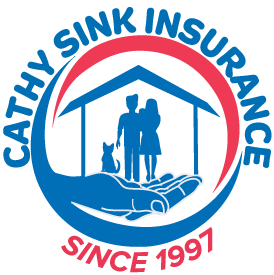Advice From The Pros
As you know, an emergency can occur anywhere at any time. And first responders offer the best tips for evacuation preparedness in the event of a natural disaster, so we’re sharing some today for you to prepare for a hurricane.
In the event of a disaster, consider the following three questions.
- Are you and your family ready and able to be self-sufficient for three to five days?
- How will you communicate without a mobile device or phone?
- Do you have a meeting place that is someplace other than your home?
The following are recommendations based on a series of important questions. When you answer these questions, you’ll be one step closer to evacuation preparedness and hurricane safety.
1. Where Will You Go If You Have To Evacuate?
Your family home is an obvious meeting place, but suppose the bridges are out, an evacuation is in effect or the roads are blocked? An effective emergency plan will include a secondary meeting place. This could be a predetermined shelter location or the home of a family member or friend in another part of town.
2. How Will You Reconnect With Loved Ones?
When a disaster strikes, you may not be able to use a landline or your cell phone. Establish a communication plan if members of your family become separated.
Long-range walkie-talkies are an option if family members go to school or work within the specified range of your walkie-talkies. Keep the devices in a backpack, desk drawer, or car and replace batteries regularly.
Provide each family member with the contact information for someone outside of the local area. Put it in writing. This person can act as an emergency communication center for family members who become separated and who can’t connect locally due to intermittent connectivity or a discharged cell phone.
3. Can You Be Self-sufficient For A Period Of At Least 3 To 5 Days?
As part of your evacuation preparedness plan, put together a disaster supply kit that includes basic supplies to make you self-sufficient for three to five days. Those family members who travel more than a few miles from home daily should have an additional kit in their workplace or vehicle.
Here Is A Shortlist Of Basic Items For Evacuation Preparedness:
- Non-perishable food items;
- Three gallons of water per person per day;
- Eating plates, bowls, and utensils;
- Hand sanitizer;
- Paper towels;
- Dust masks to filter contaminated air and duct tape and plastic sheeting for shelter;
- Pet food (if applicable);
- Cash;
- First aid kit;
- Toiletries, including feminine products;
- Scissors
- Flashlights;
- At least 5 days’ worth of medications for each family member;
- Portable battery-operated radio;
- Signaling devices such as mirrors, flares, and whistles;
- Extra batteries;
- Copies of important family documents
- Comfortable walking shoes
- Sleeping bags
More Evacuation Preparedness Tips:
- Be sure to include items that are appropriate for your region such as bug repellent, sunscreen, or cold weather apparel.
- Store these items in waterproof bags that are placed inside containers that are easy to transport such as a duffle bag or plastic bin.
- If you can’t afford to purchase all these items at once, buy a few each week until you have all the things you need.
4. Will You Be Able To Administer Basic First Aid?
These skills are indispensable in a disaster situation when emergency services aren’t available. In some cases, if a patient doesn’t get treatment right away, their condition will worsen, sometimes quite quickly.
Proper first aid classes should teach you how to respond to an assortment of emergencies including:
- Broken bones;
- Spinal injuries:
- Cuts;
- Burns;
- Sprains;
- Deep wounds.
With proper training, you’ll be prepared to confidently and calmly handle an emergency. When researching a first-aid class, look for one that:
- Clarifies how to use basic household items for emergency first-aid;
- Provides hands-on practice;
- Includes home-study materials to refresh your skills ;
- Teaches you simple acronyms to help you remember the steps you need to take in a particular situation.
5. Does Your Plan Work?
The final, and perhaps most crucial step is to test your plan to make sure it works. This can be accomplished in one of two ways.
At a minimum, bring your family together and discuss how you would handle an emergency.
Talk about different scenarios (parents are at work and/or kids are at school). Gather all the items in your emergency supply kit and divide them among family members to determine if something is missing.
The most effective way to test your evacuation preparedness plan is to put it into action. Envision your phones not working and there is no internet or electricity. Live one weekend off the items in your emergency supply kit. (But be sure to restock them.)
In addition to flashlights, consider investing in a few headlamps or even a camping toilet. Identify the locations of the shut-off switches for your house, and where you might be able to find additional drinking water if needed.
We care about hurricane safety for you and your family! Because they can be so damaging, don’t ignore an evacuation order! When ordered, leave as quickly as possible, keeping these evacuation preparedness tips in mind!
Are your home insurance and flood insurance policies up to date? If you have any questions concerning your coverage, contact us today and we’ll be happy to help!

